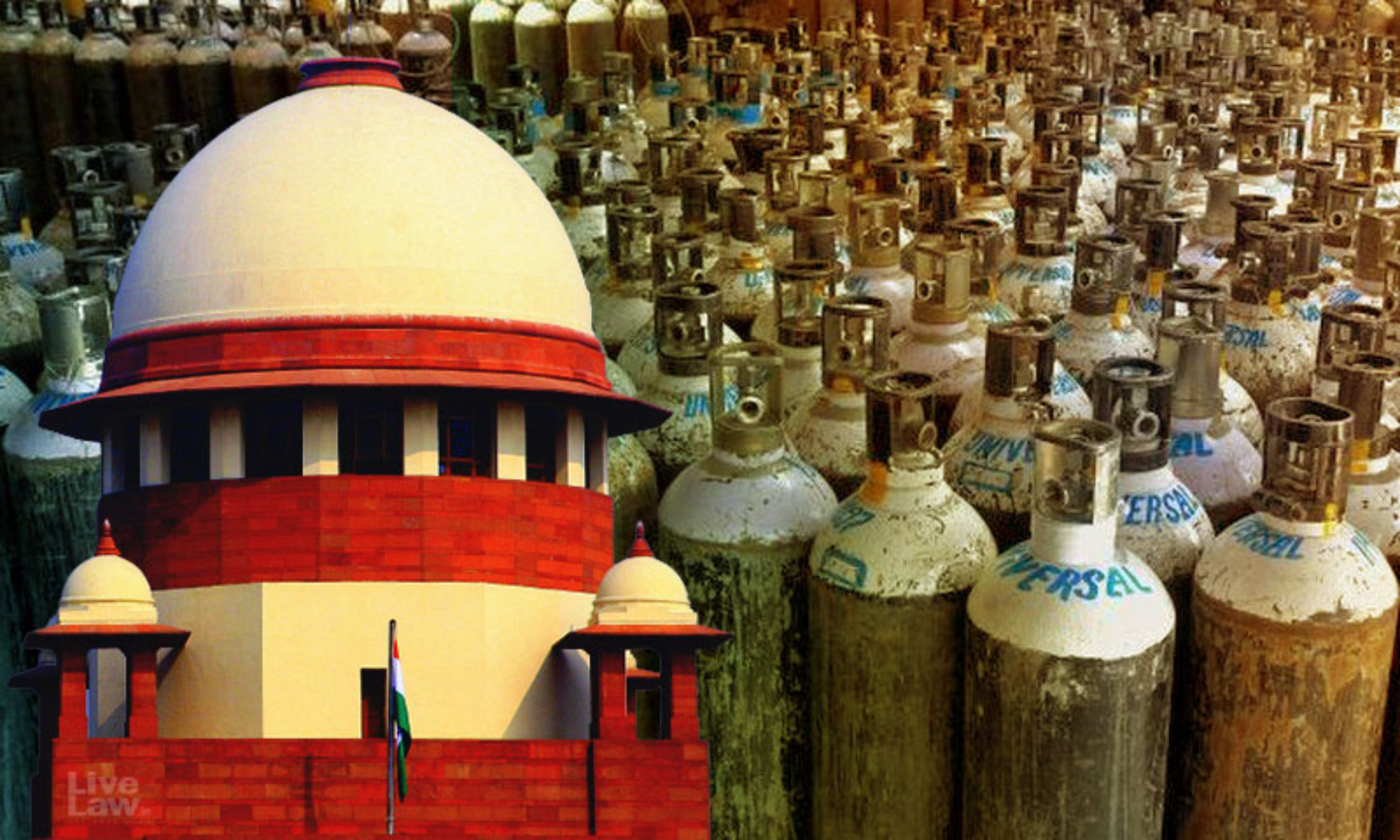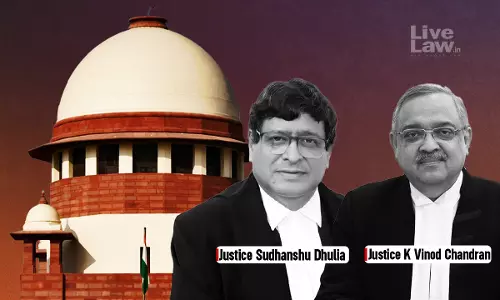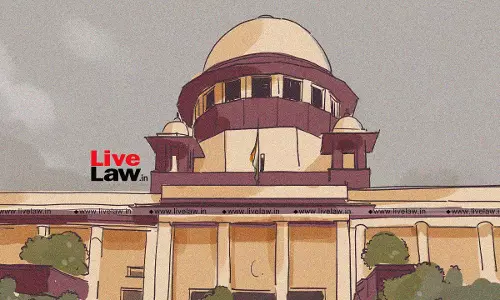'Oxygen Monitoring Committee In Every Hospitals, State Level Dashboards': National Task Force Submits Recommendations Before Supreme Court

A 12 member National Task Force constituted by the Supreme Court to formulate a methodology for scientific allocation of liquid medical oxygen to all the States and Union Territories to deal with the dearth of oxygen supply amid Covid second wave has submitted its recommendations. The recommendations made by the NTF have been placed on record through an affidavit filed by the...
The recommendations made by the NTF have been placed on record through an affidavit filed by the Union of India through Ministry of Health & Family Welfare.
The affidavit has stated that a majority of these recommendations given by the National Task Force, formed pursuant to the top Court's directions, were already being implemented by the Central Government and the Centre is also working on the other recommendations.
While appreciating the efforts made by Government in the management of the pandemic of the present magnitude, the National Task Force has classified the recommendations for steps to be taken into three levels:
- At the level of the Hospitals: This includes oxygen audit, cleaning of the pipelines, triage system for patients, etc;
- At the level of the States: This includes tracking of tankers, creating alert system for hospitals, war room at state level for real time tracking systems, reports by oxygen audit committees, etc
- At Central level: This includes procurement of cylinders, enhancing production and supply of oxygen, mapping oxygen for states as per formula that includes case load, infrastructure of beds, projected requirements, etc,
Going by the Terms of Reference laid down by the Supreme Court, the Task Force has suggested that an Oxygen Monitoring Committee should be set up in every hospital, consisting of Additional MS, Head of Anaesthesia, Respiratory Medicine/Internal Medicine and Nursing Superintendent. Further, a monitoring team should be available round the clock to ensure proper assessment of need as per hospital protocol.
According to NTF, a State dashboard should be created to monitor both supply and demand, including real-time data on available infrastructure, beds & actual oxygen consumption at each health-facility.
With regards the availability of tankers to the State, the NTF has suggested that allocation of tankers to the States during a pandemic may be taken over by the Government of India in times of emergency.
"Each State should have access to reserve tankers depending on the dynamics of pandemic to meet demand supply mismatch.Once tankers are allocated to a State, they should manage the filling and distribution of oxygen to urban and rural areas." the NTF has recommended.
While emphasizing that in shifting pandemic situation, some of the States need to shed their allocations as new allocations are made to other States, the NTF has stated that supply plan of Oxygen to the high burden States should be dynamic, based on caseload and projection of cases and should also be reviewed in real time.
Referring to the mechanisms of war room for real time monitoring, the NTF has suggested that during emergent situations such monitoring should be institutionalized. According to the Task Force, the war room should monitor movement of tankers, managing oxygen demand, its consumption and distribution in a real time, dynamic and transparent manner.
In order to augment the available supplies of oxygen based on present and projected demands likely during the pandemic, NTF has suggested that about 20% buffer capacity of the State's requirement should be created for allocation over and above baseline demand for allocation to States with rising cases.
Further, States must explore options, to plan and operationalize the buffer stock, in consultation with local stakeholders, and may actively explore setting up some make-shift hospitals in proximity of Industrial Oxygen production units.
It has been recommended that technology should be put in place to convert nitrogen plants to oxygen producing plants in case of an emergency situation.
In respect of Delhi and Mumbai, the NTF has also recommended a strategy (due to their population density) to manufacture oxygen locally or in the neighbourhood for the big cities to fulfil at least 50% of their LMO demand.
In order to facilitate audit within State and Union Territories, the NTF has recommended that State wise O2 audit committees must be put in place, and audit of hospitals should be conducted including an audit of pipeline system of hospitals to ensure judicious use of oxygen.
The Task Force has also recommended an Oxygen stewardship program whereby every hospital should have a committee to inspect and certify hospitals oxygen infrastructure use just like other systems of hospitals get audited.
Action Taken by the Government On Issues Related To Oxygen:
The National Task Force in its Action Taken Report has elaborated on the action taken by the Government for medical oxygen management during the COVID19 first wave last year and initiated this year, including the following:
- Enhanced production in steel plants as Oxygen is used in steel plants in gaseous form for manufacturing steel. A system for daily real time monitoring of the production in Steel plants and distribution of oxygen to States/Union Territories.
- Restrictions on industrial use of oxygen and Conversion of nitrogen generating plants
- Issuing licences to industrial gas manufacturers to manufacture medical oxygen
- One lakh oxygen concentrators (in the process of being procured) under PM CARES Fund through ONGC for use in rural areas
- Allocations of oxygen to States or Union Territories made through a consultative process of detailed deliberation, and facilitating transportation of Oxygen by Rail and Air
- Oxygen Digital Tracking System (ODTS) to track the daily allocations of oxygen and movement of oxygen tankers.
- Augmentation in availability of tankers, import of ISO Tankers and procurement of LOX cryogenic containers. Support to the States for establishment of PSA Oxygen generation plants.
"During the first wave, GoI had facilitated steps to enhance the availability of liquid oxygen, as well as, storage capacity of liquid medical oxygen (LMO) in hospitals and by way of cylinders. The action taken during the first wave of the pandemic last year helped to quickly put in place the mechanisms for enhanced production with the manufacturers in private sector, enhancing the production and utilization of oxygen available with the Steel plants including in their storage, use of industrial cylinders for medical use, use of LMO storage capacities available with hospitals, ISO containers were imported and used for domestic movement based on policy action taken in September last year, etc." the report said.
A division bench comprising of Justice DY Chandrachud and MR Shah had on May 6th constituted the Task Force which will be at liberty to draw upon the human resources of the Union Government for consultation and information and may also constitute one or more sub-groups on specialised areas or regions for assisting it, before finalising its recommendations.
The Court had constituted the task force after noting deficiencies in the Centre's formula for oxygen allocation, which is based on hospital-beds in a state. The Court had earlier flagged that this formula required a re-look as it did not take into account individuals who may not have secured hospital admission, but are in need of oxygen support.
The National Task Force consists of the following members(in alphabetical order):
(I) Dr Bhabatosh Biswas, Former Vice Chancellor, West Bengal University of Health Sciences, Kolkata
(ii) Dr Devender Singh Rana, Chairperson, Board of Management, Sir Ganga Ram Hospital, Delhi
(iii) Dr Devi Prasad Shetty, Chairperson and Executive Director, Narayana Healthcare, Bengaluru
(iv) Dr Gagandeep Kang, Professor, Christian Medical College, Vellore, Tamil Nadu
(v) Dr JV Peter, Director, Christian Medical College, Vellore, Tamil Nadu
(vi) Dr Naresh Trehan, Chairperson and Managing Director, Medanta Hospital and Heart Institute, Gurugram
(vii) Dr Rahul Pandit, Director, Critical Care Medicine and ICU, Fortis Hospital, Mulund (Mumbai, Maharashtra) and Kalyan (Maharashtra)
(viii) Dr Saumitra Rawat, Chairman & Head, Department of Surgical Gastroenterology and Liver Transplant, Sir Ganga Ram Hospital, Delhi
(ix) Dr Shiv Kumar Sarin, Senior Professor and Head of Department of Hepatology, Director, Institute of Liver and Biliary Science (ILBS), Delhi
(x) Dr Zarir F Udwadia, Consultant Chest Physician, Hinduja Hospital, Breach Candy Hospital and Parsee General Hospital, Mumbai
(xi) Secretary, Ministry of Health and Family Welfare, Government of India (ex officio member)
(xii) The Convenor of the National Task Force, who shall also be a member, will be the Cabinet Secretary to the Union Government. The Cabinet Secretary may nominate an officer not below the rank of Additional Secretary to depute for him, when necessary.


![Last Date to Get 30% Discount On LiveLaw Academys Judicial Service Examination Preparation Courses [Apply Now!] Last Date to Get 30% Discount On LiveLaw Academys Judicial Service Examination Preparation Courses [Apply Now!]](https://www.livelaw.in/h-upload/2025/04/12/500x300_595581-lla-early-bird-750-x-450.webp)

